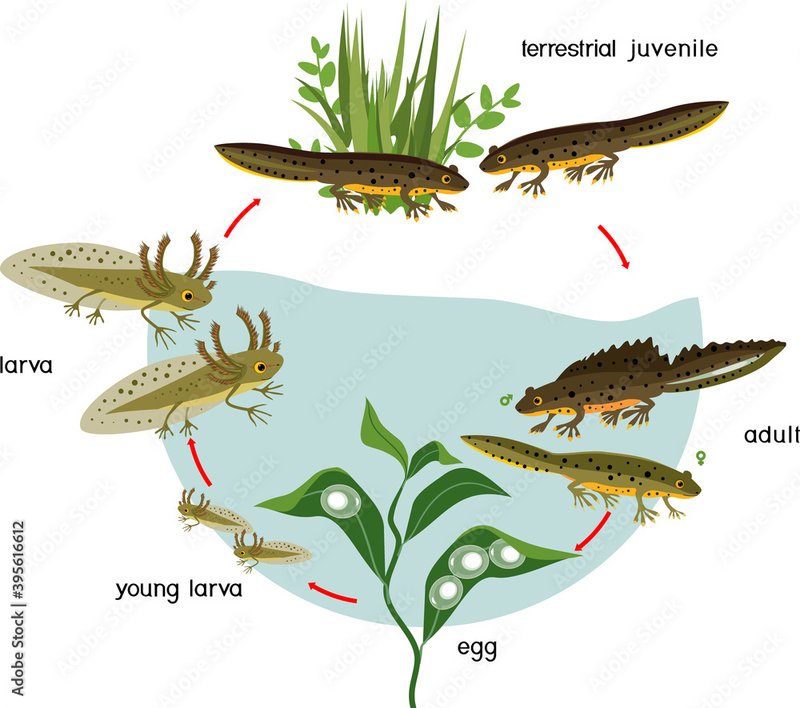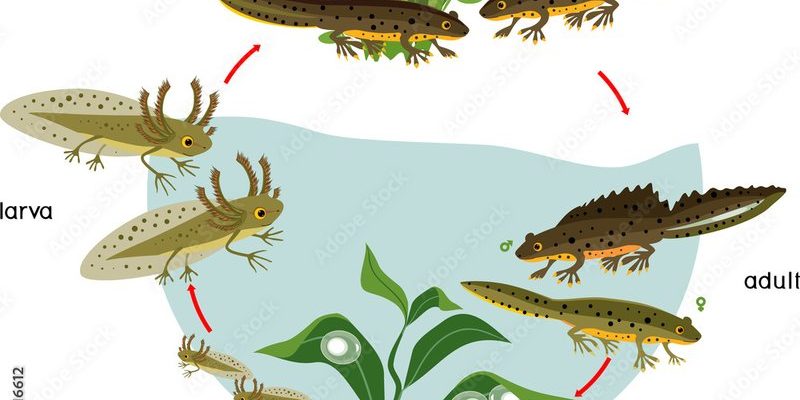
Newts belong to the family Salamandridae, which means they share a close bond with frogs and salamanders. They’ve been around for a really long time—over 200 million years! That’s longer than the dinosaurs roamed the Earth. So, pull up a chair as we dig into the evolutionary journey of these amazing amphibians, exploring their past and how they’ve changed through time.
What Are Newts, Anyway?
Newts are a type of salamander, and they belong to the amphibian class. Just like their cousins, these critters start their life in water as eggs that hatch into tadpole-like larvae. You might wonder why they’re called “newts” instead of just “salamanders.” Well, the term “newt” is rooted in Old English. It used to refer to all types of salamanders but slowly became specialized for a group of them.
You can find newts in various habitats, from forests to gardens. They often live in moist areas, like swamps and ponds. A unique feature of newts is their ability to regenerate lost limbs. If a newt loses a leg, it can grow a new one, kind of like a superhero! This amazing ability is one of the reasons scientists study them so closely.
A Brief Look at Amphibian Evolution
The story of newts starts with the broader history of amphibians. Amphibians first made their splash on Earth over 370 million years ago, evolving from lobe-finned fish. These creatures ventured onto land, paving the way for the diverse amphibian species we see today. Think of them as the pioneers of the animal kingdom.
Over time, amphibians adapted to different environments, which led to the creation of various groups. Frogs, toads, and salamanders, including newts, emerged and filled unique ecological roles. Each group developed special traits to thrive in their habitats. For example, many frogs became excellent jumpers, while salamanders, including newts, excelled in more watery environments.
The Rise of the Newt
The newt as we know it today can be traced back to the late Jurassic period, around 150 million years ago. During this time, they separated from other salamanders and began developing distinct features. One trait that stands out is their smooth, moist skin, adapted for life in and around water. Think of their skin as a protective cloak; it helps them breathe while keeping them safe in their aquatic environments.
Different species of newts emerged during the following periods. For instance, the Eastern Red-spotted Newt and the Common Newt began to appear about 40 million years ago. Isn’t it wild to think about how creatures that seem so small and simple have such a rich evolutionary backstory?
Newts in the Ecosystem
Newts play a vital role in their ecosystems. They help control insect populations by feeding on them, which benefits plants and other animals. They also act as prey for larger animals like birds and snakes. This makes them important players in food webs.
If newts disappeared from their habitats, it could throw off the balance of their entire ecosystem. Imagine a seesaw: if one side gets too heavy, it tips over. Similarly, the absence of newts could harm other species and disrupt the natural order. Protecting their habitats is crucial—not just for newts, but for countless other creatures relying on the same environment.
Adaptations Through Time
As newts evolved, they developed several unique adaptations. One of the standout features is their ability to *breathe through their skin*. This lets them absorb oxygen directly from the water. Picture this as their superpower; it allows them to thrive in damp environments.
Another fascinating adaptation is their coloration. Many species have bright, vivid colors that caution predators—like wearing a warning sign. This bright color serves as a reminder that they can be toxic. It’s a clever survival tactic you might compare to a brightly colored candy—you don’t want to taste it, even if it looks tempting!
Also, during the breeding season, males often develop frills and bright colors to attract females. It’s like a little fashion show, showcasing their best features.
Current Challenges Faced by Newts
Despite their incredible adaptability, newts face several challenges today. Habitat loss due to urbanization, climate change, and pollution has put pressure on their populations. Many species are declining or even threatened.
You might be wondering, “What can I do?” Start by supporting local conservation efforts. Simple actions like reducing water pollution and protecting wetlands can help maintain the delicate balance of their ecosystems. Every little bit counts!
Additionally, raising awareness about the importance of biodiversity can spark conversations that lead to positive change. The more people understand the value of newts and other amphibians, the better equipped we are to help them survive.
The Future of Newts: Conservation Efforts
Fortunately, there are many ongoing conservation efforts aimed at protecting newts and their habitats. Conservationists are working tirelessly to monitor populations, restore wetlands, and educate the public about the importance of these amphibians.
Some areas have established protected zones specifically for newts. These zones allow populations to thrive without the pressures of urban development. It’s like creating a safe zone for these ancient creatures to continue their journey through time.
Researchers are also studying newts to understand their biology better and how they can adapt to changing environments. This knowledge could be essential for managing and conserving amphibian populations in the future.
The evolutionary history of the newt is a captivating tale of survival, adaptation, and resilience. From their ancient beginnings to their current roles in our ecosystems, newts remind us of the importance of biodiversity and conservation.
As we learn more about these fascinating creatures, we can appreciate their place in nature and the need to protect them. So, the next time you see a newt or hear their name, think of their long journey through history. They’ve survived and adapted for millions of years, and with a little help from us, they can continue to do so for many more!

